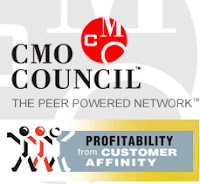
The CMO Council recently released a major study entitled Profitability from Customer Affinity, on the difficulty faced by vendors in establishing customer-centric business practices. According to the study, "Despite an increased focus on customer engagement, most B2B technology companies continue to fall far short of meeting customer expectations and commitments...Most technology vendors badly overestimate their effectiveness in addressing customer needs, while a majority of customers feel ignored and trapped in vendor relationships that are marred by broken promises."
Virtually all customers said they would terminate or scale back relationships with vendors who failed to "build customer trust." Yet customers and vendors have very different views regarding the current state of affairs: while 56% of vendors perceive themselves as being "extremely customer-centric," only 12% of customers agree. And though 85% of vendors are convinced that they are getting better at responding to customer needs, nearly half (45%) of customers disagree. While those figures are alarming, if not particularly surprising, this statistic should be a real eye-opener: just 7% of customers said that their vendors are "extremely well-aligned with their needs."
Clearly, the failure of that majority of vendors to properly align with customer needs presents an opportunity for those who are successful at this to gain a significant competitive advantage. So, how do you do that?
1. Make customer-centricity a core part of your organizational mission—then make your customer interactions, across the organization, match your rhetoric. Quick personal story: a few years ago, frustrated with Comcast as my communications provider, I called Qwest to get a price quote. The small cost differential didn't justify the hassle of switching, so I stayed with Comcast. Despite the fact that I hadn't ever switched my service over, but merely asked for a quote, Qwest billed me. Then when I refused to pay, they turned it over to a collection agency!
Normally, no one would ever give a company a second chance in a situation like that. But my frustration with Comcast eventually reached a point where I was compelled to give Qwest a second chance; this happened to be shortly after they first unveiled their "Spirit of Service" mantra.
Since making the switch, I've had occasional problems with Qwest's services. However, their people have consistently handled every issue, from billing disputes to technical problems, with courtesy and professionalism. While Qwest still has plenty of room for improvement, it's clear that the "spirit of service" tagline has been well integrated into company-wide practices, and for that the firm deserves credit.
2. Again quoting the CMO study, "Co-innovation with customers is vital to building customer affinity...collaborative, two-way conversations—followed by continuous improvement—build customer affinity." Another quick story from personal experience: Company A released a product into the market, let's just call it Model 1, that failed miserably at meeting customer expectations. It frequently ran very slowly, and sometimes failed to work at all. Rather then fix the problems with Model 1, the company devoted all of its engineering effort to Model 2, with a plan to sell the more expensive Model 2 to customers who were unhappy with the first model.
Seriously, that was the plan. Top management was clueless to the notion that customers who were unhappy with Model 1 weren't going to buy ANYTHING more from the company if their problems weren't fixed.
Contrast that with Company B. At this company, virtually every employee proudly relates stories of positive customer interactions. Of course, praise from customers is highly gratifying. What these employees are most proud of, however, are the situations in which they solved customer problems. Virtually 100% of the company's development activities are customer-driven, and it shows in the percentage of repeat and add-on product sales.
3. If you sell through a channel, your partners are your face to the customer. Yet, again according to the CMO survey results, "Only 8% of vendor marketing respondents said they do an extremely good job of teaming with the channel to build stronger customer affinity."
Making your channel partners effective ambassadors for your brand requires training (sales and technical) as well as support. Like an army, your resellers need to be well-equipped, well-trained, and properly led in order to win on the competitive battlefield.
To learn more, download the CMO study here. And while you're at the site, consider participating in their new Marketing Outlook 2008 study.
In summary, strong customer relationships are vital to building affinity, which the CMO Council study concludes is "the most accurate predictor of customers’ purchasing intentions and decisions." The bad news is that most vendors think they are doing a much better job of this than they actually are. The good news is that this presents a fantastic opportunity for those vendors who can successfully integrate affinity-building practices across their organizations.
*****
Contact Mike Bannan: mike@digitalrdm.com

Comments
I have seen this blog and its’found a nice blog .I request to blog master to update this blog for daily basis. Last week when I was searching google I found a website holdcash.com
Well it’s nice to tell you an important fact that, you don’t have to spend any money for advertisings, till you can pull excellent traffic to your website. 3 Million hits to our website, it’s a world class web promotion tools this also promise to give us rash too Web Marketing Tools every month .Join us and down load $800 worth world class web tools absolutely free. Web pays free of costs, no more advertising and promotional costs. For more details log on http://www.holdcash.com/info
I hope with your feed backs.
Regards,
Mohini.varma